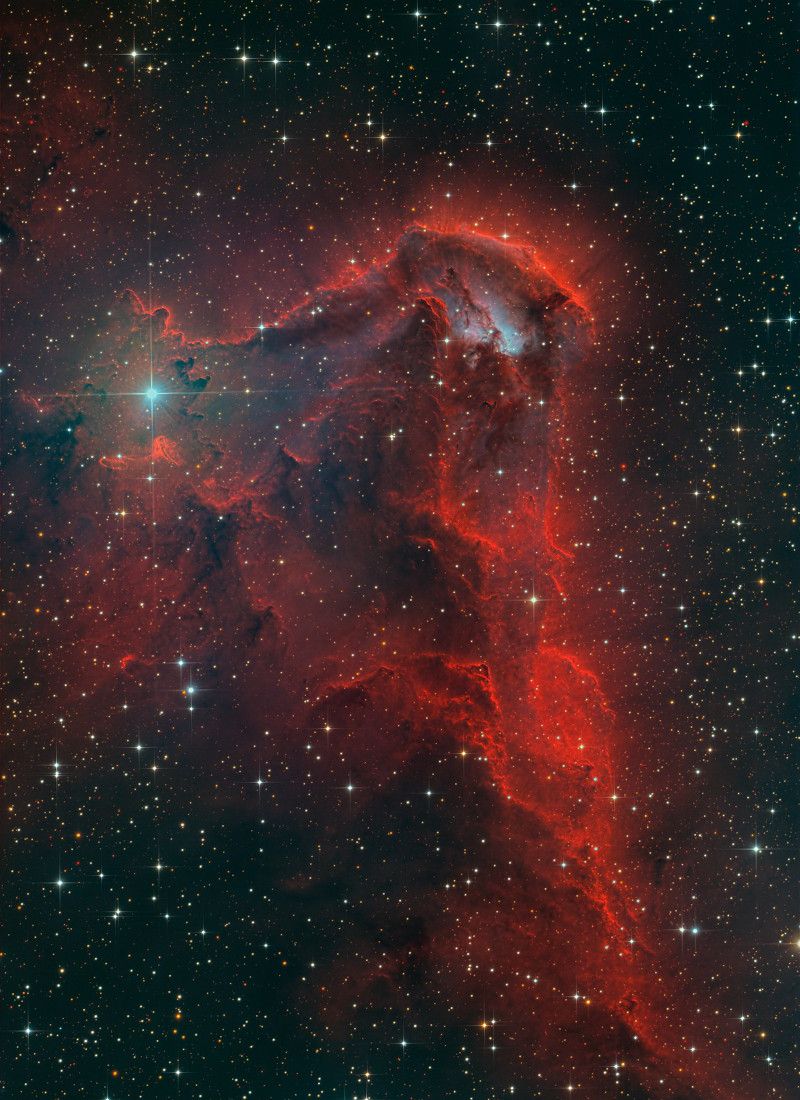Blog
Erroll Louis Garner (June 15, 1921 – January 2, 1977) was an American jazzpianist and composer known for his swing playing and ballads. His instrumental ballad “Misty“, his best-known composition, has become a jazz standard. It was first recorded in 1956 with Mitch Miller and his orchestra, and played a prominent part in the 1971 motion picture Play Misty for Me.
Scott Yanow of Allmusic calls him “one of the most distinctive of all pianists” and a “brilliant virtuoso”. Garner received a star on the Hollywood Walk of Fame at 6363 Hollywood Boulevard. His live album Concert by the Sea first released in 1955, sold more than 1 million copies by 1958, and Yanow’s opinion on the album is that it “made such a strong impression that Garner was considered immortal from then on.” Garner was born, along with twin brother Ernest in Pittsburgh, Pennsylvania on June 15, 1921.
more...John Arthur “Jaki” Byard June 15, 1922 – February 11, 1999) was an American jazz multi-instrumentalist, composer, and arranger. Mainly a pianist, he also played tenor and alto saxophones, among several other instruments. He was known for his eclectic style, incorporating everything from ragtime and stride to free jazz.
Byard played with trumpeter Maynard Ferguson in the late 1950s and early 1960s, and was a member of bands led by bassist Charles Mingus for several years, including on several studio and concert recordings. The first of his recordings as a leader was in 1960, but, despite being praised by critics, his albums and performances did not gain him much wider attention. In his 60-year career, Byard recorded at least 35 albums as leader, and more than 50 as a sideman. Byard’s influence on the music comes from his combining of musical styles during performance, and his parallel career in teaching.
From 1969 Byard was heavily involved in jazz education: he began teaching at the New England Conservatory of Music and went on to work at several other music institutions, as well as having private students. He continued performing and recording, mainly in solo and small group settings, but he also led two big bands – one made up of some of his students, and the other of professional musicians. His death, from a single gunshot while in his home, remains an unsolved mystery. Byard was born in Worcester, Massachusetts, on June 15, 1922.
more...Friday June 14th 6pm with Inbal Sharett-Singer, Jayson Rodovsky, Jeff Bailey, Pete Whitman and mick LaBriola.
more...From the 1960 astronomical catalog of Rodgers, Campbell and Whiteoak, emission region RCW 85 shines in southern night skies between bright stars Alpha and Beta Centauri. About 5,000 light years distant, the hazy interstellar cloud of glowing hydrogen gas and dust is faint. But detailed structures along well-defined rims within RCW 85 are traced in this cosmic skyscape composed of 28 hours of narrow and broadband exposures. Suggestive of dramatic shapes in other stellar nurseries where natal clouds of gas and dust are sculpted by energetic winds and radiation from newborn stars, the tantalizing nebula has been called the Devil’s Tower. This telescopic frame would span around 100 light-years at the estimated distance of RCW 85.

more...
Jules Shungu Wembadio Pene Kikumba (14 June 1949 – 24 April 2016), known professionally as Papa Wemba (French pronunciation: [papa wɛmba]), was a Congolese singer and musician who played Congolese rumba, soukous, and ndombolo.Dubbed the “King of Rumba Rock”, he was one of the most popular musicians of his time in Africa and played an important role in world music. He was also a fashion icon who popularized the Sape look and style through his musical group Viva la Musica, with whom he performed on stages throughout the world.
Papa Wemba’s road to fame and prominence began when he joined the music group Zaiko Langa Langa in the late 1960s. This was followed by his success as a founding member both of Isifi Lokole and then Yoka Lokole, along with a short stint as a member of Afrisa International for a few months. During these early stages of his career, he was establishing a style that included traditional Congolese rumba and soukous, infused with traditional African sounds, Caribbean rhythms, rock and soul. But Wemba gained international success and status with his band Viva La Musica, especially after he took them to Paris, France in the early 1980s. It was there that Wemba was able to achieve more of an “eclectic sound” in his work, influenced by western popular music that reflected a European flavor and style, referred to as “Europop.
more...William Henry Marcus Miller Jr. (born June 14, 1959) is an American musician, songwriter, and record producer. He has worked with trumpeter Miles Davis, pianist Herbie Hancock, singer Luther Vandross, and saxophonists Wayne Shorter and David Sanborn, among others. He was the main songwriter and producer on three of Davis’ albums: Tutu (1986), Music from Siesta (1987), and Amandla(1989). His collaboration with Vandross was especially close; he co-produced and served as the arranger for most of Vandross’ albums, and he and Vandross co-wrote many of Vandross’ songs, including the hits “I Really Didn’t Mean It“, “Any Love“, “Power of Love/Love Power” and “Don’t Want to Be a Fool“. He also co-wrote the 1988 single “Da Butt” for Experience Unlimited.
William Henry Marcus Miller Jr. was born in the Brooklyn borough of New York City on June 14, 1959. He grew up in a musical family; his father, William Miller, was a church organist and choir director. Through his father, he is the cousin of jazz pianist Wynton Kelly. He became classically trained as a clarinetist and later learned to play keyboards, saxophone, and guitar.
more...Kenny Drew Jr. (June 14, 1958 – August 3, 2014) was an American jazz pianist. His music is known for its hard-swinging bluesy sound and large, two-handed rooty chords contrasting with fast runs. The son of jazz pianist Kenny Drew, he did not credit his father as an influence.
His initial study was in classical music with his aunt and grandmother. In his teens he became interested in jazz and pop, but initially worked in funk bands. Later he went into jazz piano and in 1990 won The Great American Jazz Piano Competition in Jacksonville, Florida. Drew continued to perform jazz, but he also performed some chamber music. His style has some similarities to his father’s, but is different enough to generally avoid comparison; he was considered the more eclectic of the two men.
more...Spiral galaxy Messier 66 lies a mere 35 million light-years away. The gorgeous island universe is about 100 thousand light-years across, similar in size to the Milky Way. This Hubble Space Telescope close-up view spans a region about 30,000 light-years wide around the galactic core. It shows the galaxy’s disk dramatically inclined to our line-of-sight. Surrounding its bright core, the likely home of a supermassive black hole, obscuring dust lanes and young, blue star clusters sweep along spiral arms dotted with the tell-tale glow of pinkish star forming regions. Messier 66, also known as NGC 3627, is the brightest of the three galaxies in the gravitationally interacting Leo Triplet.

William M. “Wild Bill” Moore (June 13, 1918 – August 1, 1983) was an American R&B and jazz tenor saxophone player. Moore earned a modest hit on the Hot R&B charts with “We’re Gonna Rock, We’re Gonna Roll”, which also was one of the earliest rock and roll records according to some sources.
Moore was born in Detroit Michigan and began playing the alto saxophone at an early age. However, prior to his musical career, he was an amateur boxer, winning Michigan’s Golden Gloves light heavyweight championship in 1937, before briefly turning professional. By the early 1940s, Moore abandoned his boxing career in favor of music, and was inspired by musicians Chu Berry and Illinois Jacquet to switch to tenor saxophone. In 1944, he made his recording debut, accompanying Christine Chatman, the wife of Memphis Slim, for Decca Records. Between 1945 and 1947, Moore was performing and recording in Los Angeles with Slim Gaillard, Jack McVea, Big Joe Turner, Dexter Gordon, and played on Helen Humes’ hit recording, “Be-Baba-Leba”.
more...Uriel Jones (June 13, 1934 – March 24, 2009) was an American musician. Jones was a recording session drummer for Motown‘s in-house studio band, the Funk Brothers, during the 1960s and early 1970s.
Jones was first hired by Motown as a fill-in for principal drummer Benny Benjamin; along with Richard “Pistol” Allen, he moved up the line as recordings increased and Benjamin’s health deteriorated. Hits that Jones played drums on include “Ain’t No Mountain High Enough” – both versions, by Marvin Gaye & Tammi Terrell in 1967 and the 1970 remake by Diana Ross, “I Heard It Through the Grapevine” and “Ain’t That Peculiar” by Marvin Gaye, “Cloud Nine” (in which he was augmented by Spider Webb), “I Can’t Get Next to You“, and “Ain’t Too Proud to Beg” by the Temptations, “What Becomes of the Brokenhearted” by Jimmy Ruffin, Jr. Walker‘s “Home Cookin’,” “The Tracks of My Tears” and “I Second That Emotion” by Smokey Robinson & the Miracles, and “For Once in My Life” by Stevie Wonder. His influences included jazz drummer Art Blakey. For his Motown recordings, Jones performed on a studio set composed of Ludwig, Slingerland, Rogers and Gretsch components and possibly Zildjiancymbals. Jones became better known to music fans through his appearance in the feature documentary film, Standing in the Shadows of Motown. Motown arranger Paul Riser said of Jones that “Uriel’s drum sound was the most open and laid-back, and he was the funkiest of the three guys we had…He had a mixed feel and did a lot of different things well.”
more...Esther Zaied, better known by her married name Esther Ofarim (Hebrew: אסתר עופרים; born June 13, 1941), is an Israeli singer. She came second in the 1963 Eurovision Song Contest with the song “T’en va pas“, representing Switzerland. After marrying Abi Ofarim in 1958, she was half of the husband-and-wife folk duo Esther & Abi Ofarim in the 1960s. After the couple divorced, she undertook a successful solo career.
Esther Zaied was born in Safed to a Syrian Jewish family. She began performing as a child, singing Hebrew and international folk songs. In 1958, Esther met Abi Ofarim, a guitarist and dancer, who she later married. She was a student in his dance studio in Haifa. Esther served four months in the Israeli Army before she was discharged owing to her marriage to Abi.
more...Attila Cornelius Zoller (June 13, 1927 – January 25, 1998) was a Hungarian jazz guitarist. After World War II, he escaped the Soviet takeover of Hungary by fleeing through the mountains on foot into Austria. In 1959, he moved to the U.S., where he spent the rest of his life as a musician and teacher.
Zoller was born in Visegrád, Hungary. As a child, he learned violin from his father, a professional violinist. While in school, he played flugelhorn and bass before choosing guitar. He dropped out of school and played in jazz clubs in Budapest while Russia occupied Hungary. He fled Hungary in 1948 as the Soviet Union was establishing communist military rule. He escaped on foot, carrying his guitar through the mountains into Austria. He settled in Vienna, became an Austrian citizen, and started a jazz group with accordionist Vera Auer.
In the mid-1950s, Zoller moved to Germany and played with German musicians Jutta Hipp and Hans Koller. When American jazz musicians passed through, such as Oscar Pettiford and Lee Konitz, they persuaded him to move to the United States. He moved to the U.S. after receiving a scholarship to the Lenox School of Jazz. One of his teachers was guitarist Jim Hall and his roommate was Ornette Coleman, who got him interested in free jazz.
more...
This powerful feline appearing nebula is powered by two massive stars, each with a mass over 20 times greater than our Sun. Formed from shells of ionized gasthat have expanded, the nebula’s energetic matter not only glows, but is dense enough to contract gravitationally and form stars. The angular size of the Lion Nebula, officially named Sh2-132, is slightly greater than that of the full moon. The gaseous iconic region resides about 10,000 light years away in a constellation named after the King of Aethopia in Greek mythology.

More Posts
- Burning Spear
- Ralph Towner
- Harry Belafonte
- Frédéric Chopin
- World Music Wu Man
- Daily Roots Prince Buster
- Cosmos NGC 253
- Brain Jones
- John Fahey
- Willie Bobo
- World Music Altai Kai
- Daily Roots Rod Taylor
- Cosmos JO201
- Chuck Wayne
- Dexter Gordon
- World Music Fela Anikulapo Kuti
- Daily Roots Yabby You & The Prophets
- Cosmos PK 164 +31.1
- Mitch Rider
- Trevor Watts